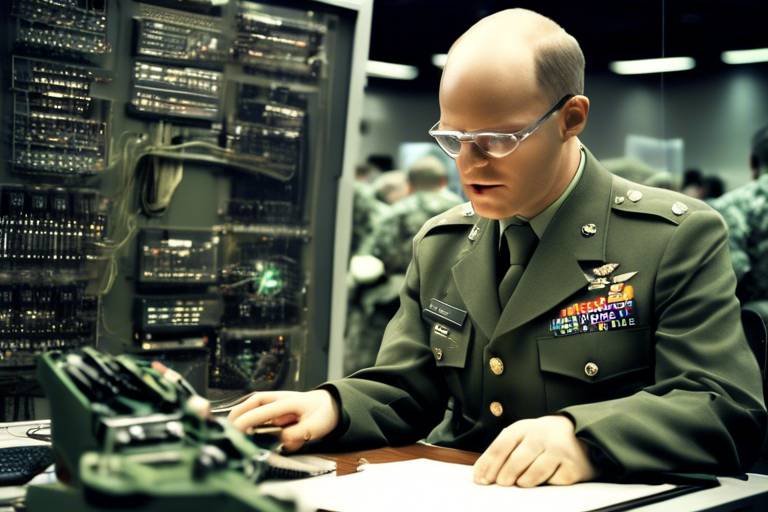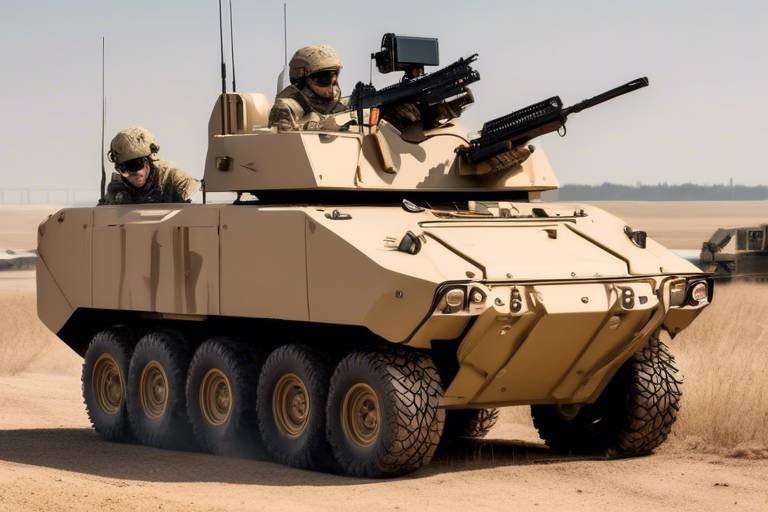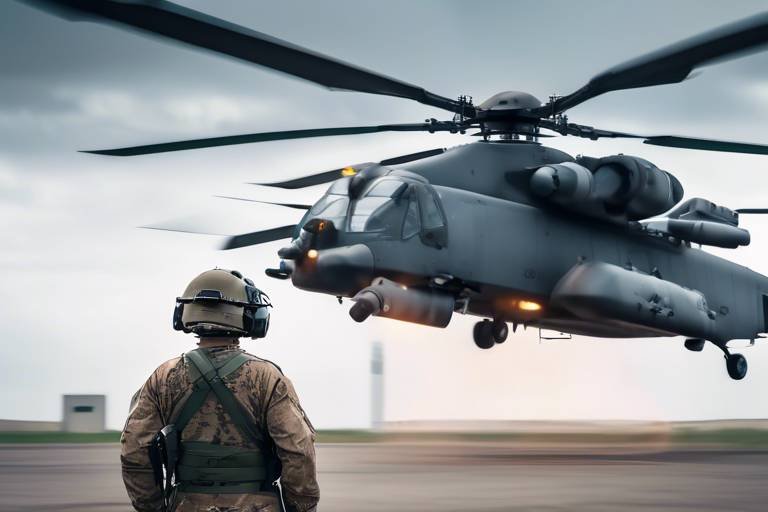Exploring Military Applications of Biometric Scanning
In today's rapidly evolving technological landscape, biometric scanning has emerged as a game-changer, especially within military operations. Imagine a world where security breaches are minimized, and the identification of personnel is as quick as a blink of an eye. This is not just a fantasy; it’s becoming a reality thanks to biometric technologies. These advanced systems leverage unique physical or behavioral traits—like fingerprints, facial recognition, and iris scans—to enhance security and operational efficiency. As military forces around the globe adopt these technologies, they are not only improving safety but also redefining how operations are conducted in the field.
The integration of biometric scanning into military operations is akin to giving soldiers a superpower—one that allows them to identify threats and allies in real-time. This article delves into the various ways these technologies are utilized, highlighting their implications and the potential future they hold. From enhancing security protocols to addressing ethical concerns, the military’s embrace of biometric scanning is a multifaceted topic that warrants a closer look. Are we ready to embrace this new era of identification, or do the risks outweigh the benefits? Let’s explore!
Biometric technologies encompass a variety of methods designed to identify individuals based on their unique characteristics. These methods can be broadly categorized into two types: physiological traits and behavioral traits. Physiological traits include fingerprints, facial recognition, and iris scans, while behavioral traits might involve voice recognition or even typing patterns. In military settings, these technologies are not just tools; they are essential components that bolster security and streamline identification processes. The ability to quickly and accurately identify personnel and potential threats is crucial in high-stakes environments, making biometric scanning a vital asset for military operations.
Imagine a military installation where only authorized personnel can enter sensitive areas. Biometric scanning makes this a reality by significantly improving security protocols. With traditional methods, such as ID cards or passwords, there’s always a risk of unauthorized access. However, biometric systems provide a reliable means of identification, ensuring that only verified individuals can gain entry. This not only reduces the likelihood of security breaches but also enhances overall safety within military environments. It’s like having a digital bouncer who only lets in the VIPs!
The implementation of access control systems that utilize biometric scanning allows for a seamless entry process. Imagine walking up to a secure area, and with just a quick scan of your fingerprint or face, you’re granted access. This streamlined verification minimizes wait times while maintaining high-security standards. The risk of breaches is significantly reduced, as these systems are designed to be robust and resistant to tampering. In essence, they serve as the first line of defense, ensuring that only those who belong can enter sensitive areas.
One of the most remarkable aspects of biometric scanning is its ability to integrate with existing security systems. This means that military installations can upgrade their identification methods without completely overhauling their current infrastructure. By incorporating biometric technologies into their existing frameworks, military operations can enhance efficiency while preserving the integrity of their protocols. It’s like adding a turbocharger to a car—boosting performance without losing the essence of what makes it run.
Real-time monitoring is another powerful feature made possible by biometric systems. These technologies allow military personnel to track movements and interactions, providing valuable data for security assessments. Imagine being able to monitor a situation as it unfolds, with the ability to identify individuals instantly. This enhances situational awareness and equips military units with the information they need to make informed decisions quickly. In the chaos of field operations, having access to real-time data can mean the difference between success and failure.
In the heat of field operations, the rapid identification of personnel and potential threats is crucial. Biometric scanning serves as a vital tool for military units, enabling them to make swift decisions that can improve mission effectiveness and safety. Picture a scenario where a unit encounters an unknown individual in a sensitive area. With biometric scanning, they can quickly determine whether that person is an ally or a potential threat, allowing them to respond appropriately. This capability not only enhances operational efficiency but also saves lives.
While the benefits of biometric scanning in military applications are compelling, they also raise important questions about data privacy and ethics. The collection and storage of biometric data can pose significant risks if not managed properly. It’s essential to strike a balance between enhancing security and protecting individual rights. As we embrace these advanced technologies, we must also consider the potential for misuse of biometric data and the implications for personal privacy.
Establishing comprehensive regulatory frameworks for biometric data usage is crucial. These frameworks ensure compliance with legal standards, protecting individuals' rights while allowing military operations to benefit from advanced identification technologies. By implementing strict guidelines, the military can harness the power of biometric scanning without infringing on privacy. It’s a delicate dance that requires careful consideration and transparency to maintain public trust.
Public perception plays a significant role in the acceptance of biometric scanning technologies in military contexts. If the public feels that their privacy is being invaded or that surveillance is too pervasive, resistance to these technologies will grow. Therefore, fostering trust and transparency is vital for successful implementation. Engaging with the community and addressing concerns about data security can help build a positive perception of biometric scanning, paving the way for its broader acceptance.
- What are biometric scanning technologies? Biometric scanning technologies identify individuals based on unique physical or behavioral traits, such as fingerprints and facial recognition.
- How do biometric systems enhance military security? They provide reliable identification methods, reducing unauthorized access and ensuring that only verified personnel can enter sensitive areas.
- What are the ethical concerns surrounding biometric scanning? Concerns include data privacy, potential misuse of biometric data, and the need for regulatory frameworks to protect individual rights.
- How does public perception affect the implementation of biometric technologies? Public trust is crucial; if people feel their privacy is at risk, they may resist the adoption of these technologies.
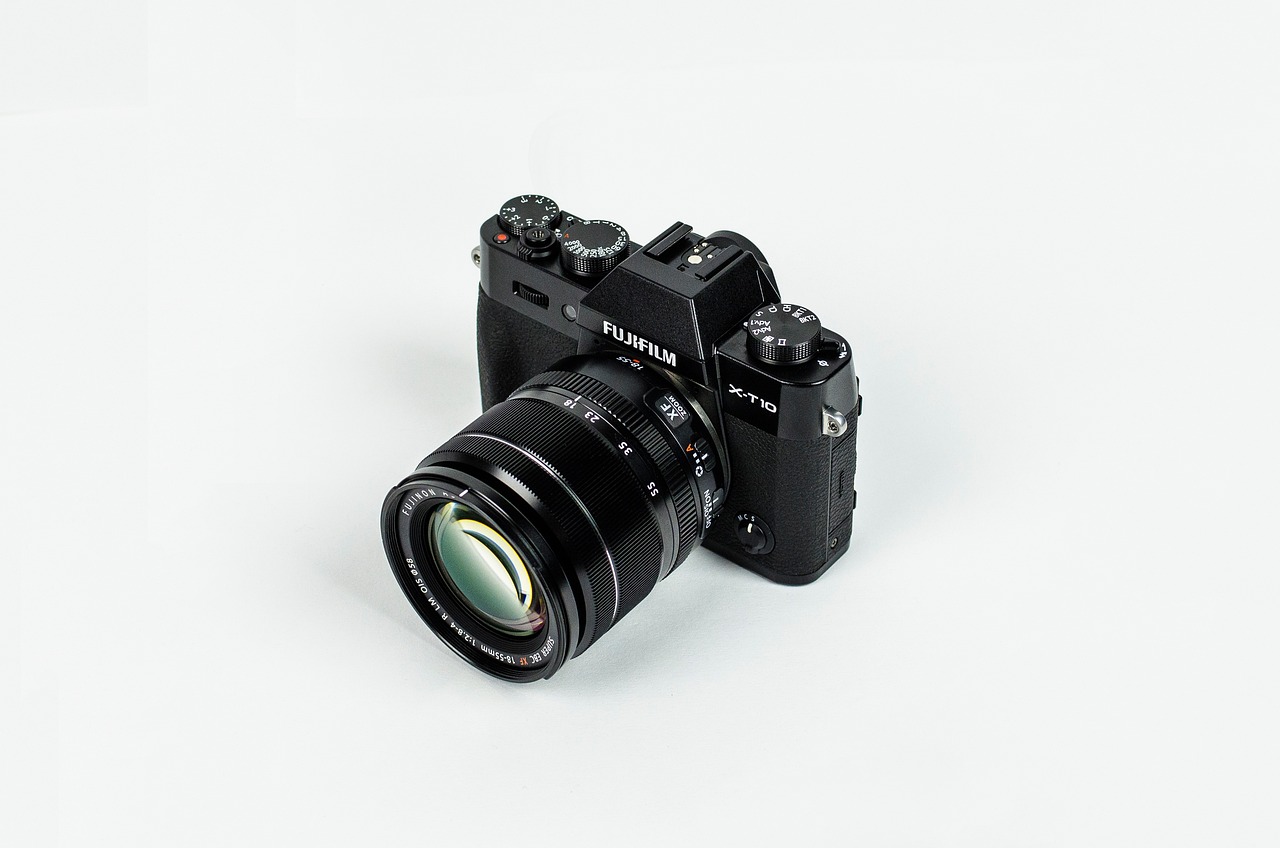
Overview of Biometric Technologies
This article delves into the various ways biometric scanning technologies are utilized in military operations, enhancing security, identification, and operational efficiency while discussing their implications and future potential.
Biometric technologies are revolutionizing the way we identify individuals by leveraging unique physical or behavioral traits. These technologies serve as powerful tools in military settings, where security and accurate identification are paramount. Among the most commonly used biometric methods are:
- Fingerprints: Each person's fingerprint is distinct, making it a reliable method for identification. Military personnel can quickly verify identities using fingerprint scanners, which are both portable and efficient.
- Facial Recognition: This technology analyzes facial features and compares them to a database of known individuals. With advancements in artificial intelligence, facial recognition has become faster and more accurate, making it ideal for use in high-stakes environments.
- Iris Scans: The patterns in a person's iris are unique and stable over time. Iris scanning is highly secure and can be performed from a distance, which is particularly useful in military operations where speed and accuracy are critical.
These biometric methods not only enhance the identification process but also play a crucial role in improving the overall security framework of military operations. By implementing biometric scanning, military organizations can significantly reduce the risk of unauthorized access to sensitive areas. For instance, in high-security installations, biometric systems can ensure that only verified personnel gain entry, thereby preventing potential breaches.
Moreover, the integration of biometric technologies with existing security systems is seamless, allowing military units to upgrade their identification methods without overhauling their entire infrastructure. This means that traditional security measures can coexist with advanced biometric systems, providing a layered approach to security that is both effective and efficient.
As we look to the future, the implications of biometric technologies in military operations are vast. Real-time monitoring capabilities enabled by these systems allow for enhanced situational awareness. Military personnel can track movements and interactions, gathering valuable data that can inform security assessments and operational strategies. This level of insight is invaluable in dynamic environments where quick decision-making is essential for mission success.
Biometric scanning significantly improves security protocols within military installations by providing reliable identification methods, reducing unauthorized access, and ensuring that only verified personnel can enter sensitive areas, thus enhancing overall safety.
Access control systems utilizing biometric scanning streamline entry processes, allowing for quick verification of personnel while maintaining high-security standards, thereby minimizing the risk of breaches and ensuring only authorized individuals gain entry.
Integrating biometric scanning with existing security systems allows for a seamless transition to advanced identification methods, enhancing operational efficiency while maintaining the integrity of current protocols and infrastructure.
Real-time monitoring capabilities enabled by biometric systems allow military personnel to track movements and interactions, providing valuable data for security assessments and enhancing situational awareness in various operational environments.
In field operations, biometric scanning aids in the rapid identification of personnel and potential threats, enabling military units to make informed decisions quickly, thus improving mission effectiveness and safety.
The implementation of biometric scanning in military applications raises important data privacy and ethical concerns, necessitating a discussion on how to balance security needs with individual rights and the potential for misuse of biometric data.
Establishing regulatory frameworks for biometric data usage ensures compliance with legal standards, protecting individuals' rights while allowing military operations to benefit from advanced identification technologies without infringing on privacy.
Public perception of biometric scanning technologies can influence their acceptance in military contexts; fostering trust and transparency is vital for successful implementation and addressing concerns regarding surveillance and data security.
1. What are biometric technologies?
Biometric technologies are methods of identifying individuals based on unique physical or behavioral traits, such as fingerprints, facial recognition, and iris scans.
2. How does biometric scanning enhance military security?
Biometric scanning improves military security by providing reliable identification methods, reducing unauthorized access, and ensuring that only verified personnel can enter sensitive areas.
3. What are the ethical concerns surrounding biometric scanning?
The ethical concerns include data privacy issues, potential misuse of biometric data, and the need to balance security with individual rights.
4. How are biometric systems integrated with existing security frameworks?
Biometric systems can be integrated with existing security frameworks to enhance identification methods without overhauling the entire infrastructure, allowing for a layered security approach.
5. What role does public perception play in the implementation of biometric technologies?
Public perception can significantly influence the acceptance of biometric technologies in military contexts, making it essential to foster trust and transparency to address concerns regarding surveillance and data security.

Enhancing Security Protocols
In today's fast-paced military environment, the need for robust security protocols has never been more critical. Biometric scanning technologies are revolutionizing how military installations manage access and ensure safety. By employing methods such as fingerprint recognition, facial recognition, and iris scans, military organizations can significantly enhance their security measures. Imagine a world where a simple glance or touch can confirm identity—this is not science fiction; it's the reality of modern military security.
One of the most significant advantages of biometric scanning is its ability to provide reliable identification methods. Traditional security measures, such as ID cards or passwords, are often susceptible to theft or forgery. In contrast, biometric data is unique to each individual and difficult to replicate. This unique characteristic drastically reduces the risk of unauthorized access, ensuring that only verified personnel can enter sensitive areas. The implications are profound: enhanced safety for military personnel and critical assets alike.
Access control systems that utilize biometric scanning streamline entry processes, allowing for quick verification of personnel while maintaining high-security standards. Picture this: a soldier approaches a secure facility, and instead of fumbling with a card or entering a passcode, they simply place their finger on a scanner or look into a camera. Within seconds, the system confirms their identity, granting them access. This not only saves time but also minimizes the risk of human error, which can lead to security breaches.
Integrating biometric scanning with existing security systems is another critical aspect that enhances operational efficiency. Many military installations already have established security protocols in place, and the transition to advanced identification methods can be daunting. However, with the right approach, biometric systems can be seamlessly integrated into these existing frameworks. This ensures that the integrity of current protocols and infrastructure is maintained, while also elevating security measures to meet contemporary challenges.
Furthermore, the real-time monitoring capabilities enabled by biometric systems provide military personnel with valuable data for security assessments. Imagine being able to track movements and interactions in real-time, offering a clear picture of who is where and when. This enhanced situational awareness is crucial in various operational environments, allowing military units to respond swiftly to potential threats. With biometric scanning, the military can not only identify personnel but also monitor their activities, leading to more informed decision-making.
In conclusion, the integration of biometric scanning technologies into military security protocols is a game-changer. By enhancing access control systems, integrating with existing infrastructures, and providing real-time monitoring capabilities, the military can significantly improve its security measures. As we continue to explore the potential of these technologies, one thing is clear: the future of military security is here, and it’s more advanced than ever.
- What are the main types of biometric scanning technologies used in the military? The military commonly uses fingerprint recognition, facial recognition, and iris scans for identification and access control.
- How does biometric scanning improve security? Biometric scanning provides a reliable method of identifying individuals, reducing the risk of unauthorized access and ensuring that only verified personnel can enter sensitive areas.
- Can biometric systems be integrated with existing security measures? Yes, biometric systems can be seamlessly integrated into existing security frameworks, enhancing operational efficiency while maintaining current protocols.
- What are the ethical concerns surrounding biometric scanning in the military? Ethical concerns include data privacy, potential misuse of biometric data, and the need for regulatory frameworks to protect individual rights.
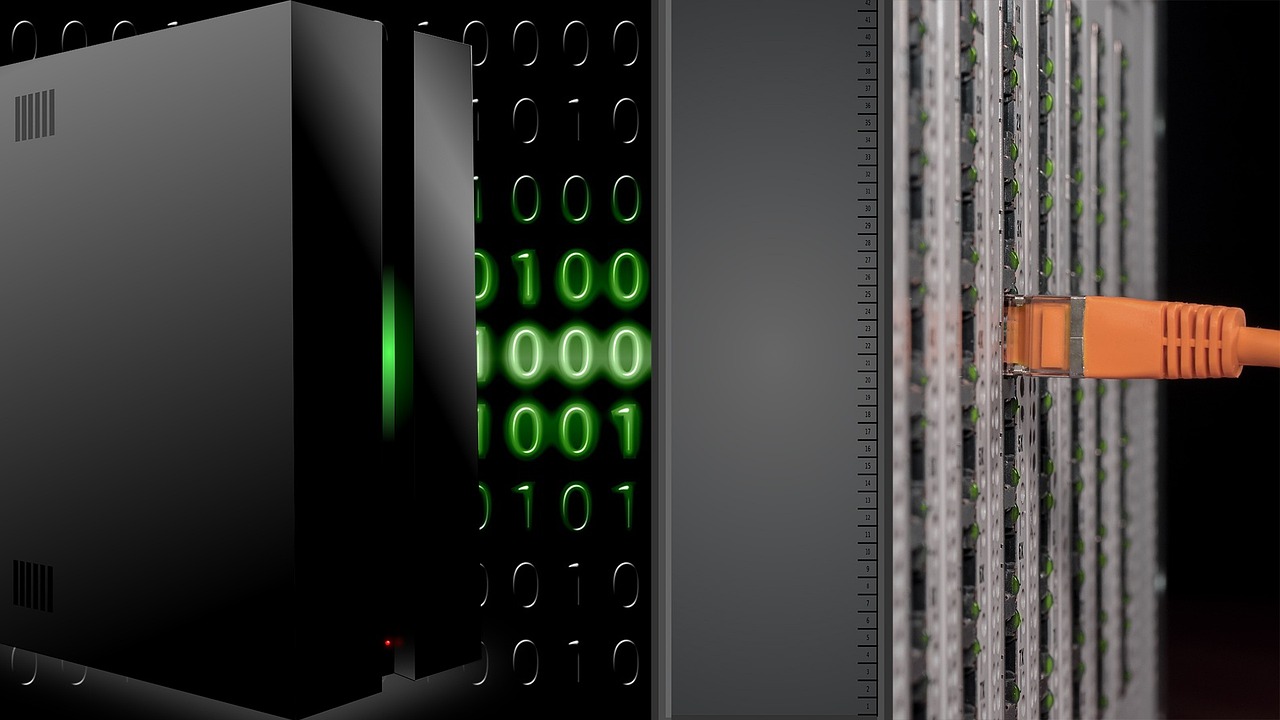
Access Control Systems
Access control systems that utilize biometric scanning have revolutionized how military installations manage entry and security. Imagine a world where security isn't just a matter of keys, cards, or codes, but rather a sophisticated, seamless process that recognizes individuals based on their unique biological traits. This is not science fiction; it's the reality of modern military operations. Biometric access control systems offer a robust solution to the challenges of unauthorized access, ensuring that only verified personnel can enter sensitive areas. By employing technologies such as fingerprint scanning, facial recognition, and iris recognition, these systems provide a level of security that traditional methods simply cannot match.
One of the standout features of biometric access control systems is their ability to streamline entry processes. Instead of fumbling for a keycard or remembering a complex passcode, personnel can gain access with just a simple scan. This not only speeds up the process but also minimizes the risk of human error. For instance, if a soldier is rushing to get into a secure area during a critical situation, a quick biometric scan can provide instant verification, allowing them to focus on the task at hand rather than worrying about security protocols.
Moreover, the integration of biometric systems with existing security infrastructures is a game-changer. Rather than overhauling entire security protocols, military installations can incorporate biometric technology into their current systems. This integration ensures that the transition to advanced identification methods is smooth and maintains the integrity of existing security measures. For instance, a military base might combine biometric scanning with traditional ID checks, creating a layered defense that enhances security without complicating the process.
Real-time monitoring capabilities are another significant advantage of biometric access control systems. These systems can track movements and interactions, providing military personnel with valuable data for security assessments. Imagine a scenario where an unauthorized individual attempts to breach a secure area; biometric systems can instantly alert security teams, enabling them to respond swiftly and effectively. This level of situational awareness is crucial in military operations where every second counts.
In summary, biometric access control systems are not just a technological advancement; they represent a fundamental shift in how military installations approach security. By providing reliable identification methods, streamlining entry processes, and integrating with existing systems, these technologies significantly enhance operational efficiency and safety. As military operations become increasingly complex, the need for robust, reliable access control systems that can adapt to evolving threats has never been more critical.
- What types of biometric systems are commonly used in military access control?
Common types include fingerprint scanners, facial recognition software, and iris recognition systems, each providing unique advantages in terms of security and speed. - How do biometric systems enhance security compared to traditional methods?
Biometric systems are more reliable as they use unique biological traits for identification, making it nearly impossible to forge or share access credentials. - Are there privacy concerns associated with biometric access control?
Yes, while biometric systems enhance security, they also raise important privacy issues that must be addressed through regulatory frameworks to protect individuals' rights. - Can biometric systems be integrated with existing security measures?
Absolutely! Biometric systems can complement and enhance existing security protocols, creating a multi-layered approach to access control.

Integration with Existing Systems
Integrating biometric scanning technologies with existing military security systems is not just a matter of adding new gadgets; it's about creating a cohesive, efficient, and secure environment that enhances operational capabilities. Imagine a well-oiled machine where each part communicates seamlessly—this is the goal when incorporating biometric systems into current infrastructures. The transition to biometric identification methods can be daunting, but with careful planning and execution, it can lead to significant improvements in both security and efficiency.
One of the primary benefits of this integration is the ability to leverage existing databases and security protocols. Military installations often have established systems for access control, surveillance, and personnel tracking. By integrating biometric scanning, these systems can be upgraded to include advanced identification methods, such as fingerprint recognition, facial recognition, and iris scanning. This not only enhances the accuracy of personnel verification but also reduces the time it takes to process entries, allowing for a smoother flow of authorized individuals entering secure areas.
Moreover, the integration process can be tailored to fit the unique needs of each military branch or unit. For instance, a naval base might prioritize maritime security features, while an army installation could focus on land-based access protocols. This flexibility ensures that the biometric systems enhance, rather than disrupt, existing operations. A well-planned integration strategy might involve:
- Conducting thorough assessments of current security systems
- Identifying key areas where biometric technologies can provide the most benefit
- Training personnel on new systems to ensure smooth adoption
Additionally, integrating biometric scanning with existing systems allows for real-time data sharing and analysis. This capability is crucial for maintaining situational awareness, as military personnel can monitor movements and interactions instantly. Imagine being able to track who enters a facility at any given moment, cross-referencing that data with a database of known threats. This level of vigilance not only enhances security but also empowers military units to make informed decisions rapidly, which is vital in high-stakes environments.
To further illustrate the impact of integration, consider the following table summarizing the advantages of incorporating biometric systems into existing military frameworks:
| Advantage | Description |
|---|---|
| Improved Accuracy | Reduces false positives and negatives in personnel identification. |
| Enhanced Efficiency | Speeds up the verification process, allowing for quicker access. |
| Real-time Data Sharing | Facilitates immediate access to security information and alerts. |
| Customizable Solutions | Allows military units to tailor systems to their specific needs. |
In conclusion, the integration of biometric scanning technologies with existing military systems is a transformative step towards enhancing security and operational efficiency. It requires a thoughtful approach, but the potential benefits far outweigh the challenges. As the military continues to evolve, embracing such advancements will be crucial in maintaining a secure and effective operational environment.
- What are biometric scanning technologies? Biometric scanning technologies identify individuals based on unique physical or behavioral traits, such as fingerprints, facial recognition, or iris scans.
- How does biometric scanning improve military security? It enhances security by providing reliable identification methods, reducing unauthorized access, and ensuring that only verified personnel can enter sensitive areas.
- Can biometric systems be integrated with existing security systems? Yes, biometric systems can be integrated with current security protocols to enhance operational efficiency without disrupting existing infrastructure.
- What are the ethical concerns surrounding biometric scanning? Ethical concerns include data privacy issues and the potential for misuse of biometric data, necessitating a balance between security needs and individual rights.
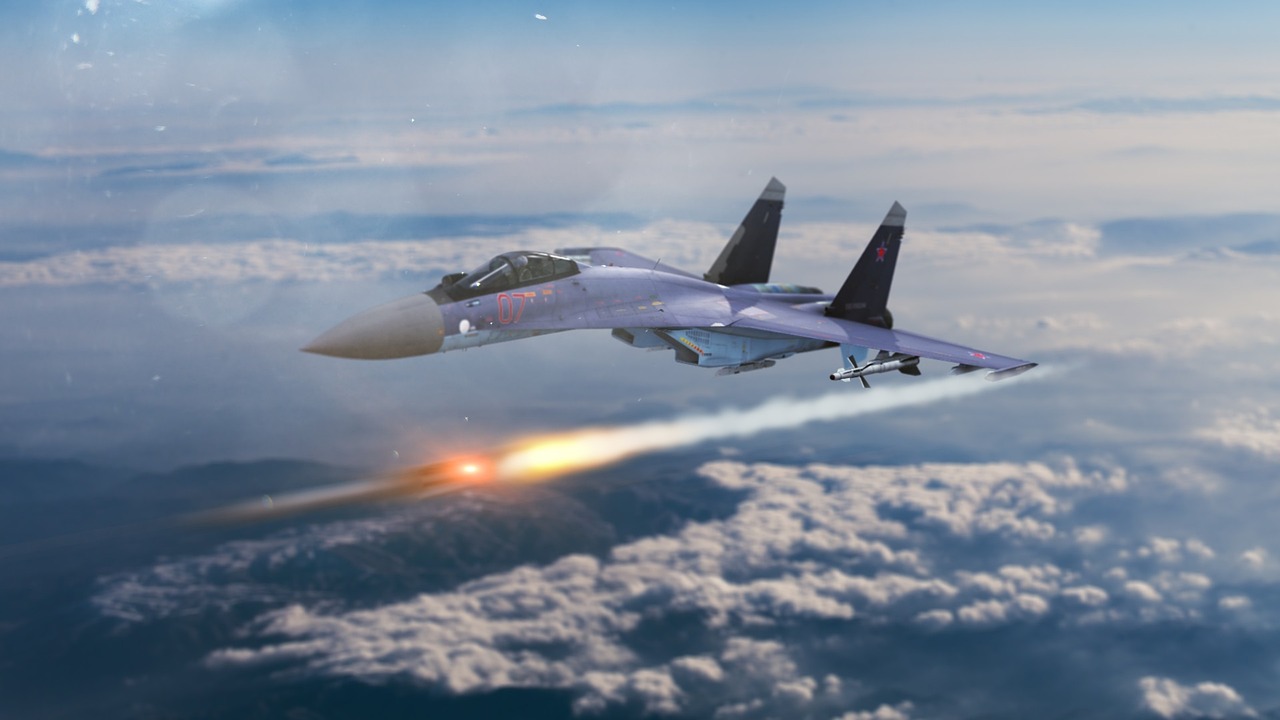
Real-time Monitoring Capabilities
In the fast-paced and often unpredictable environment of military operations, enabled by biometric scanning technologies play a pivotal role in enhancing situational awareness. Imagine a scenario where a military unit is deployed in a conflict zone; the ability to monitor personnel and potential threats in real-time can be the difference between mission success and failure. By utilizing biometric systems, military forces can track movements, identify individuals, and assess interactions as they occur, providing commanders with invaluable data to make informed decisions swiftly.
One of the most significant advantages of real-time monitoring is the capacity to detect unauthorized personnel or potential threats immediately. For instance, if a soldier's biometric data is scanned at a checkpoint, the system can instantly verify their identity against a database of known individuals. If an anomaly arises—say, an unauthorized individual attempts to gain access—the system can alert security personnel in real-time, allowing for rapid intervention. This level of immediate feedback not only enhances security but also fosters a culture of accountability among military personnel.
Furthermore, integrating biometric scanning with advanced surveillance systems allows for a comprehensive overview of operational environments. With the data collected, military leaders can analyze patterns of behavior, track the movement of personnel, and even monitor interactions between different units. This data can be crucial for understanding the dynamics of a situation, predicting potential conflicts, and ensuring that resources are allocated efficiently. The ability to visualize this data in real-time can be likened to having a tactical advantage on a chessboard; every move is monitored, and strategies can be adjusted instantaneously.
To illustrate the effectiveness of real-time monitoring capabilities, consider the following table that outlines key features and benefits:
| Feature | Benefit |
|---|---|
| Instant Identity Verification | Quickly confirms personnel identity, reducing wait times and enhancing security. |
| Threat Detection | Immediate alerts for unauthorized access, allowing for rapid response to security breaches. |
| Data Analytics | Analysis of movement patterns aids in strategic planning and resource allocation. |
| Enhanced Communication | Real-time updates facilitate better coordination among units, improving overall mission effectiveness. |
In conclusion, the integration of real-time monitoring capabilities through biometric scanning is revolutionizing military operations. By providing immediate access to critical information, these technologies empower military personnel to act decisively and effectively in high-stakes situations. As we continue to explore the potential of biometric technologies, it becomes increasingly clear that their role in enhancing security and operational efficiency cannot be overstated.
- What are biometric scanning technologies? Biometric scanning technologies are methods used to identify individuals based on unique physical or behavioral traits, such as fingerprints, facial recognition, and iris scans.
- How does real-time monitoring improve military operations? Real-time monitoring allows for immediate identification of personnel and threats, enhancing situational awareness and enabling swift decision-making.
- Are there privacy concerns associated with biometric scanning? Yes, the use of biometric data raises important privacy and ethical considerations that must be addressed through regulatory frameworks and transparent practices.
- How can military organizations ensure the ethical use of biometric data? Establishing clear regulatory frameworks and promoting transparency can help protect individual rights while allowing for the benefits of biometric technologies.

Field Operations and Identification
In the fast-paced world of military operations, the ability to swiftly identify personnel and potential threats is not just a luxury; it's a necessity. Imagine a scenario where a military unit is deployed in a high-stakes environment, surrounded by unknown entities. In such situations, biometric scanning technology acts like a digital guardian, ensuring that every individual is verified and accounted for. By utilizing cutting-edge technologies such as fingerprint recognition, facial recognition, and iris scanning, military forces can enhance their operational effectiveness significantly.
One of the most compelling advantages of employing biometric scanning in field operations is the speed at which personnel can be identified. Traditional methods of identification, such as ID cards or passwords, can be easily forged or forgotten. In contrast, biometric traits are unique and cannot be replicated. This uniqueness allows military units to make rapid decisions based on accurate data. For instance, when a soldier approaches a secure checkpoint, a quick scan of their fingerprint can confirm their identity within seconds, allowing for immediate access or flagging them for further inspection if there’s a discrepancy.
Moreover, biometric scanning doesn't just stop at identifying friendly forces; it also plays a crucial role in recognizing potential threats. Imagine a scenario where a unit encounters a group of civilians in a conflict zone. By employing biometric technology, they can quickly assess whether any individuals have a history of hostile actions or affiliations. This capability not only enhances the safety of military personnel but also aids in making informed decisions that can prevent potential threats from escalating.
However, the use of biometric scanning in field operations is not without its challenges. The accuracy of biometric systems can be affected by various factors, such as environmental conditions or the physical state of the individual being scanned. For example, adverse weather conditions might hinder the effectiveness of facial recognition systems, while dirt or injuries could impact fingerprint scans. To mitigate these issues, military units often employ a combination of biometric technologies, ensuring redundancy and reliability in identification processes.
Additionally, the integration of biometric scanning with real-time data analysis tools can provide military units with a comprehensive understanding of their operational environment. By analyzing data collected from biometric scans, military leaders can identify patterns and trends that inform strategic decisions. For instance, if biometric data reveals a spike in unauthorized personnel in a specific area, military operations can be adjusted accordingly to enhance security measures.
In summary, the role of biometric scanning in field operations extends far beyond simple identification. It enhances operational efficiency, improves safety, and provides critical data that can shape military strategies. As technology continues to evolve, we can expect even more innovative applications of biometric scanning, making it an indispensable tool in modern military operations.
- What are the primary biometric scanning technologies used in military operations?
The primary technologies include fingerprint recognition, facial recognition, and iris scanning, each providing unique advantages in identifying individuals. - How does biometric scanning improve security in military settings?
By ensuring that only verified personnel can access sensitive areas, biometric scanning significantly reduces the risk of unauthorized access and enhances overall safety. - Are there any privacy concerns associated with biometric scanning?
Yes, the implementation of biometric technologies raises important data privacy and ethical concerns, necessitating careful consideration of regulatory frameworks and public perception. - Can biometric systems be integrated with existing military security protocols?
Absolutely! Biometric scanning can be seamlessly integrated with current security systems, enhancing operational efficiency while maintaining existing protocols.

Data Privacy and Ethical Considerations
The implementation of biometric scanning technologies in military applications has sparked a significant debate surrounding data privacy and ethical considerations. While these technologies offer enhanced security and identification capabilities, they also bring forth critical questions about the balance between safety and individual rights. As military organizations increasingly adopt biometric systems, understanding the implications of these technologies becomes essential.
One of the primary concerns is the potential for misuse of biometric data. Unlike passwords or PINs, biometric identifiers such as fingerprints or facial recognition are unique to each individual and cannot be changed if compromised. This raises the stakes significantly—if a biometric database is hacked, the consequences could be irreversible. Military operations must ensure that they have robust security measures in place to protect this sensitive information. Furthermore, there is a pressing need for transparency regarding how biometric data is collected, stored, and utilized. Without proper communication, public trust can erode, leading to skepticism and resistance against these technologies.
To address these concerns, establishing regulatory frameworks is crucial. These frameworks should outline the legal standards for biometric data usage, ensuring compliance while protecting individual rights. For example, laws could dictate how long biometric data can be stored and under what circumstances it can be accessed. By implementing clear guidelines, military organizations can reassure the public that their data is handled responsibly.
Moreover, it's vital to engage in conversations about public perception and trust. The acceptance of biometric technologies in military contexts largely depends on how these systems are perceived by the general population. If people feel that their privacy is compromised or that they are under constant surveillance, they may oppose the use of these technologies. Therefore, fostering trust through transparency and open dialogue is essential. Military organizations should actively involve communities in discussions about biometric scanning, addressing concerns and highlighting the benefits, such as improved security measures and enhanced operational efficiency.
In summary, while biometric scanning technologies present numerous advantages for military operations, they also raise significant ethical and privacy challenges. By establishing regulatory frameworks and fostering public trust, military organizations can navigate these complexities, ensuring that the benefits of biometric scanning are realized without compromising individual rights. As we move forward, it’s imperative to continually assess the impact of these technologies and adapt our approaches to safeguard both security and privacy.
- What are biometric scanning technologies? Biometric scanning technologies identify individuals based on unique physical or behavioral traits, such as fingerprints, facial recognition, and iris scans.
- How does biometric scanning enhance military security? By providing reliable identification methods, biometric scanning reduces unauthorized access and ensures that only verified personnel can enter sensitive areas.
- What are the ethical concerns related to biometric data? The main concerns include potential misuse of data, privacy infringement, and the need for transparency in how data is collected and used.
- How can public trust be fostered regarding biometric technologies? Engaging in open dialogue, addressing concerns, and ensuring transparency about data usage can help build public trust.
- Are there regulations governing the use of biometric data? Yes, establishing regulatory frameworks is essential to ensure compliance and protect individual rights while allowing for the benefits of biometric technologies.

Regulatory Frameworks
In the rapidly evolving landscape of military applications for biometric scanning, establishing robust is essential. These frameworks serve as the backbone for the ethical use of biometric data, ensuring that the balance between security needs and individual rights is maintained. The military's reliance on biometric technologies like facial recognition, fingerprint scanning, and iris detection raises significant concerns about privacy, data security, and potential misuse. Therefore, a comprehensive regulatory approach is critical to safeguard both the operational effectiveness of military missions and the civil liberties of individuals.
One of the primary objectives of these regulatory frameworks is to set clear guidelines on how biometric data is collected, stored, and utilized. This includes establishing strict protocols for data access and sharing, ensuring that only authorized personnel can interact with sensitive biometric information. For instance, regulations might stipulate that biometric data must be encrypted and stored securely to prevent unauthorized access or breaches. Additionally, military organizations must be transparent about their data usage policies, allowing individuals to understand how their biometric information is being handled.
Furthermore, regulatory frameworks should also address the issue of consent. Individuals whose biometric data is collected must be informed about the purpose of data collection and how it will be used. This not only fosters trust but also empowers personnel to make informed decisions regarding their data. In many cases, this could involve a clear opt-in process where individuals can choose to provide their biometric information voluntarily.
To illustrate the importance of a well-structured regulatory framework, consider the following table that outlines key components that should be included:
| Component | Description |
|---|---|
| Data Collection | Guidelines on how biometric data is collected, ensuring it is done ethically and transparently. |
| Data Storage | Protocols for secure storage of biometric data to prevent unauthorized access and breaches. |
| Access Control | Regulations defining who can access biometric data and under what circumstances. |
| Consent | Requirements for obtaining informed consent from individuals before collecting their biometric data. |
| Compliance and Accountability | Mechanisms for ensuring compliance with regulations and holding organizations accountable for misuse. |
Moreover, as technology continues to advance, regulatory frameworks must remain flexible and adaptive. This adaptability is crucial for addressing emerging technologies and potential challenges that may arise in the future. Continuous dialogue among stakeholders—including military officials, legal experts, and civil rights advocates—is essential to refine these frameworks and ensure they remain relevant.
In conclusion, the establishment of effective regulatory frameworks for biometric data in military applications is not just a legal necessity but a moral imperative. By prioritizing data privacy and individual rights, the military can harness the full potential of biometric technologies while maintaining public trust and ensuring ethical practices. As we move forward, the conversation around these frameworks must remain active and inclusive, paving the way for a secure and responsible integration of biometric scanning in military operations.
- What are biometric scanning technologies?
Biometric scanning technologies are methods used to identify individuals based on unique physical or behavioral traits, such as fingerprints, facial recognition, and iris scans. - How does biometric scanning enhance military security?
It enhances military security by providing reliable identification methods, reducing unauthorized access, and ensuring that only verified personnel can enter sensitive areas. - What are the ethical concerns surrounding biometric data?
Ethical concerns include data privacy, potential misuse of biometric information, and the need for informed consent from individuals whose data is collected. - How can regulatory frameworks help in military applications of biometric scanning?
They can provide guidelines for data collection, storage, access, and consent, ensuring that individual rights are protected while allowing for effective military operations.

Public Perception and Trust
The integration of biometric scanning technologies in military operations has sparked a myriad of reactions from the public, ranging from enthusiasm to skepticism. This duality in perception often stems from a fundamental concern: how much do we trust our military institutions to handle our personal data responsibly? As these technologies become more prevalent, the military must engage in an ongoing dialogue with the public to foster understanding and trust. Transparency about how biometric data is collected, stored, and used is crucial in alleviating fears surrounding privacy and surveillance.
Furthermore, the effectiveness of biometric systems can also influence public trust. For instance, if the technology consistently proves to enhance security without compromising individual rights, the public may be more inclined to accept its use. On the contrary, any missteps or breaches of data can lead to a significant backlash. It’s a delicate balance; the military must not only ensure that the technology is robust and effective but also communicate its benefits clearly.
To better understand public sentiment, consider the following factors that shape perceptions of biometric scanning in military contexts:
- Awareness: Many people are unaware of how biometric technologies work and their potential benefits. Educational initiatives can help demystify these systems.
- Historical Context: Past experiences with government surveillance can color current views. If individuals feel that their privacy has been violated in the past, they may be more resistant to new technologies.
- Media Influence: The portrayal of biometric technologies in news and entertainment can significantly sway public opinion, often sensationalizing risks while downplaying benefits.
Moreover, establishing a feedback mechanism where the public can voice their concerns or suggestions about biometric scanning can enhance trust. When people feel that their opinions are valued, they are more likely to support military initiatives. The military can also leverage social media platforms to engage with the community, providing updates and addressing misconceptions in real-time.
In summary, building public trust in biometric scanning technologies used by the military requires a multifaceted approach. It involves transparency, education, and proactive engagement with the community. By addressing concerns head-on and demonstrating the tangible benefits of these technologies, the military can foster a more supportive public perception, ultimately enhancing the effectiveness of its operations.
- What are biometric scanning technologies?
Biometric scanning technologies are methods of identifying individuals based on unique physical or behavioral traits, such as fingerprints, facial recognition, and iris scans. - How does biometric scanning improve military operations?
It enhances security protocols, streamlines access control, and aids in rapid identification during field operations, thus increasing operational efficiency. - What are the privacy concerns associated with biometric scanning?
Concerns mainly revolve around how biometric data is collected, stored, and used, as well as the potential for misuse of this sensitive information. - How can the military build public trust regarding biometric technologies?
By fostering transparency, engaging in public dialogue, and demonstrating the benefits of these technologies, the military can enhance trust among the populace.
Frequently Asked Questions
- What are biometric scanning technologies?
Biometric scanning technologies are methods used to identify individuals based on unique physical or behavioral traits. This includes techniques like fingerprint recognition, facial recognition, and iris scanning, which are increasingly important in military settings for enhancing security and identification.
- How does biometric scanning enhance security in military operations?
Biometric scanning significantly bolsters security protocols by providing reliable identification methods. This reduces the risk of unauthorized access and ensures that only verified personnel can enter sensitive areas, thus enhancing overall safety within military installations.
- What role do access control systems play in military security?
Access control systems that utilize biometric scanning streamline entry processes. They allow for quick verification of personnel, maintaining high-security standards and minimizing the risk of breaches, ensuring that only authorized individuals gain entry to secure locations.
- Can biometric systems integrate with existing security frameworks?
Absolutely! Integrating biometric scanning with existing security systems allows for a seamless transition to advanced identification methods. This enhances operational efficiency while preserving the integrity of current protocols and infrastructure.
- What are the real-time monitoring capabilities of biometric systems?
Real-time monitoring capabilities enable military personnel to track movements and interactions. This provides valuable data for security assessments and enhances situational awareness across various operational environments, contributing to more informed decision-making.
- What ethical considerations arise from the use of biometric scanning?
The implementation of biometric scanning raises important data privacy and ethical concerns. It is crucial to balance security needs with individual rights and consider the potential for misuse of biometric data, which necessitates ongoing discussions and regulatory oversight.
- How are regulatory frameworks established for biometric data usage?
Establishing regulatory frameworks involves creating guidelines and standards that ensure compliance with legal requirements. This protects individuals' rights while allowing military operations to leverage advanced identification technologies without infringing on privacy.
- What is the public perception of biometric scanning in military contexts?
Public perception can significantly influence the acceptance of biometric scanning technologies in military contexts. Fostering trust and transparency is essential for successful implementation and addressing concerns related to surveillance and data security.



